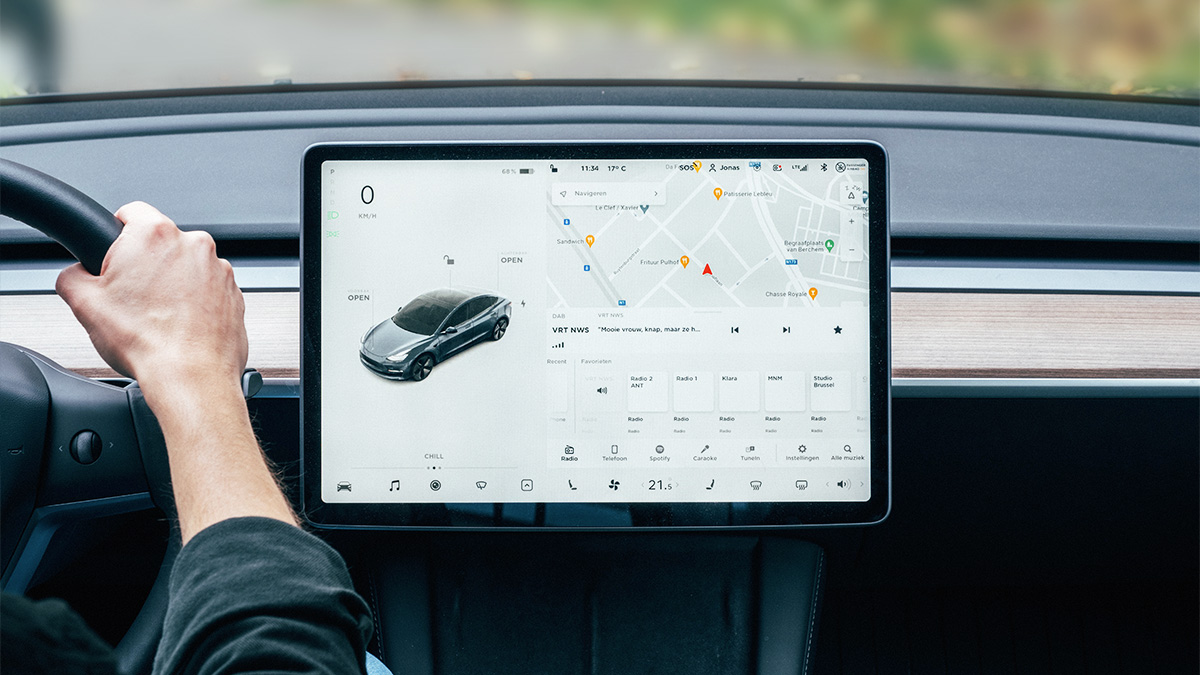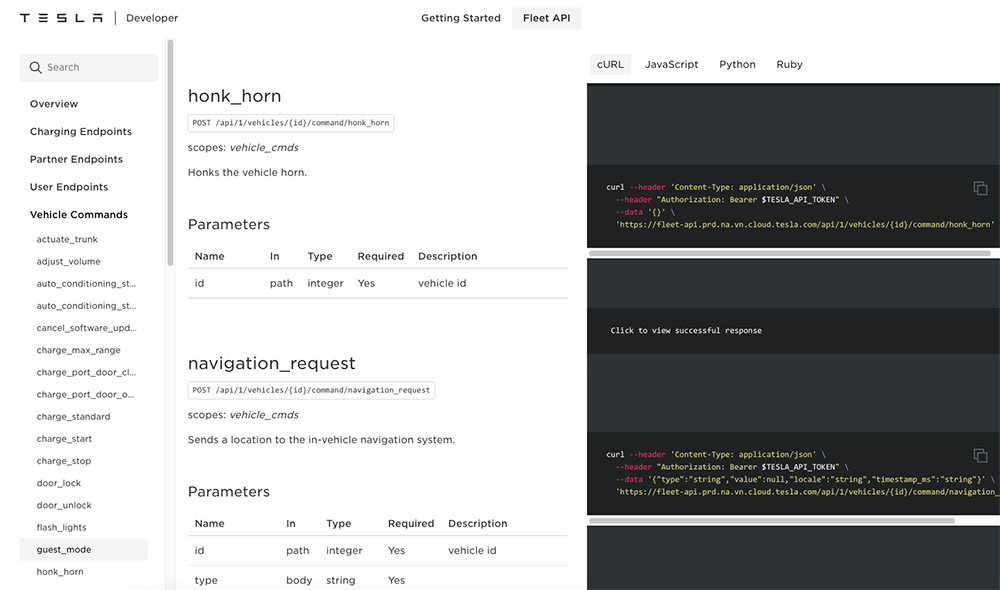
After years of operating in a gray area with an unofficial API, Tesla has just released the official API documentation for third-party apps in its models. This decision suggests that Elon Musk’s company could soon launch its own app store.
For now, the shared API seems primarily geared towards the management of the brand’s fleet of vehicles, but interested developers hope to see the beginnings of a more standardized and coherent application ecosystem.
An API to rule them all
So far, Tesla has always struggled to decide how to integrate applications into its connected device which, as we know, is presented as a large central touchscreen in its cars.
In 2016, Elon Musk considered pushing the mirroring of applications from the phone to this central console, an approach similar to Apple CarPlay and Android Auto. However, Tesla chose to backtrack and maintain exclusive control over the user experience inside its vehicles.
The deployment of this official API represents a turning point in the ecosystem and suggests uses that will benefit Tesla owners for managing their vehicle, and deeper integrations (with smartwatches, for example).
Digging a little into the documentation, available here, we find among the list of available commands the ability to manage volume, air conditioning, opening and closing doors, and even honking the horn.

This officialization is good news for some businesses, created mainly around the development of third-party apps for Tesla. They will see this as a way to legitimize their activity and also to base their projects on more stable foundations.
The documentation released by Tesla reveals that, although some apps can work thanks to the unofficial API, all third-party apps will now have to go through the new API starting next year.
As indicated in the documentation: “from 2024, most vehicles will require sending commands via the Tesla Vehicle Command SDK”. Existing app developers will need to take steps to obtain official authorization from the manufacturer to access car data and interfaces in their apps.
The fact that the current API focuses on fleet management is undoubtedly linked to the massive partnership between Tesla and the American car rental company Hertz. The latter indeed committed at the end of 2021 to order 100,000 Teslas to expand its fleet of electric vehicles.
Money is money

Introduced as the “Discovery Tier”, the published API is currently offered for free. Tesla is expected to introduce usage fees starting next year, although the exact terms of use have not been specified yet.
This approach is reminiscent of the upheaval Elon Musk made when he took over Twitter (now X) and his relentless quest for profitability, by tightening the grip on the API requests of the social network.
Initially free, the platform introduced different pricing levels for using its API, some of which can reach several thousand dollars per month.
This drastic and sudden change unfortunately was the end for several applications; some developers immediately ended their services, while others passed on the cost to their users.
This new API policy even led to tensions between Musk and Microsoft, after the company publicly complained about this change on the platform. The entrepreneur then threatened to sue the Redmond company for illegally exploiting Twitter data for training its artificial intelligences, including ChatGPT.
It’s uncertain if there will be such a clash regarding Tesla, but at least the money will be there.
(Illustration image: DEPOSITPHOTOS)



